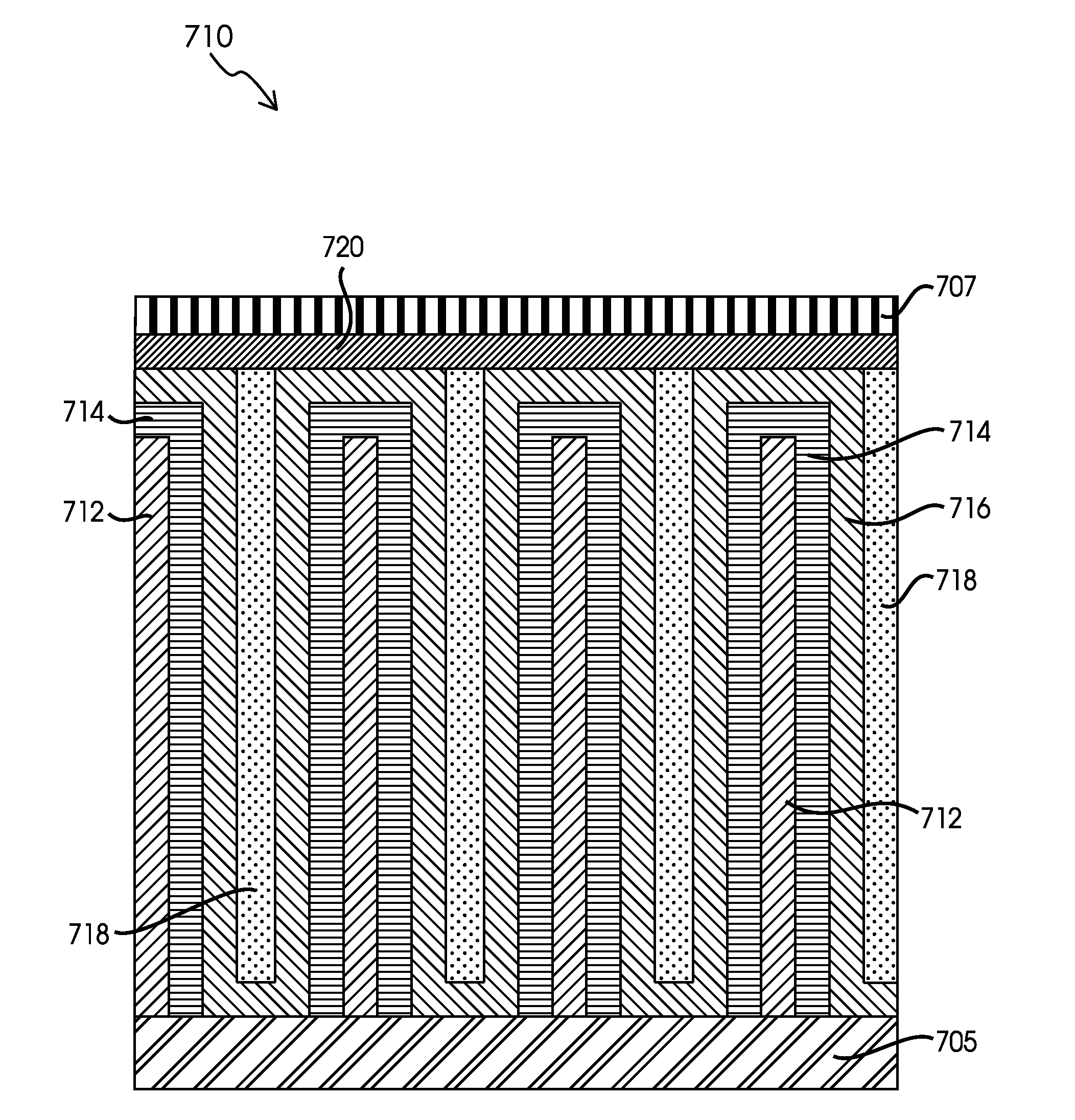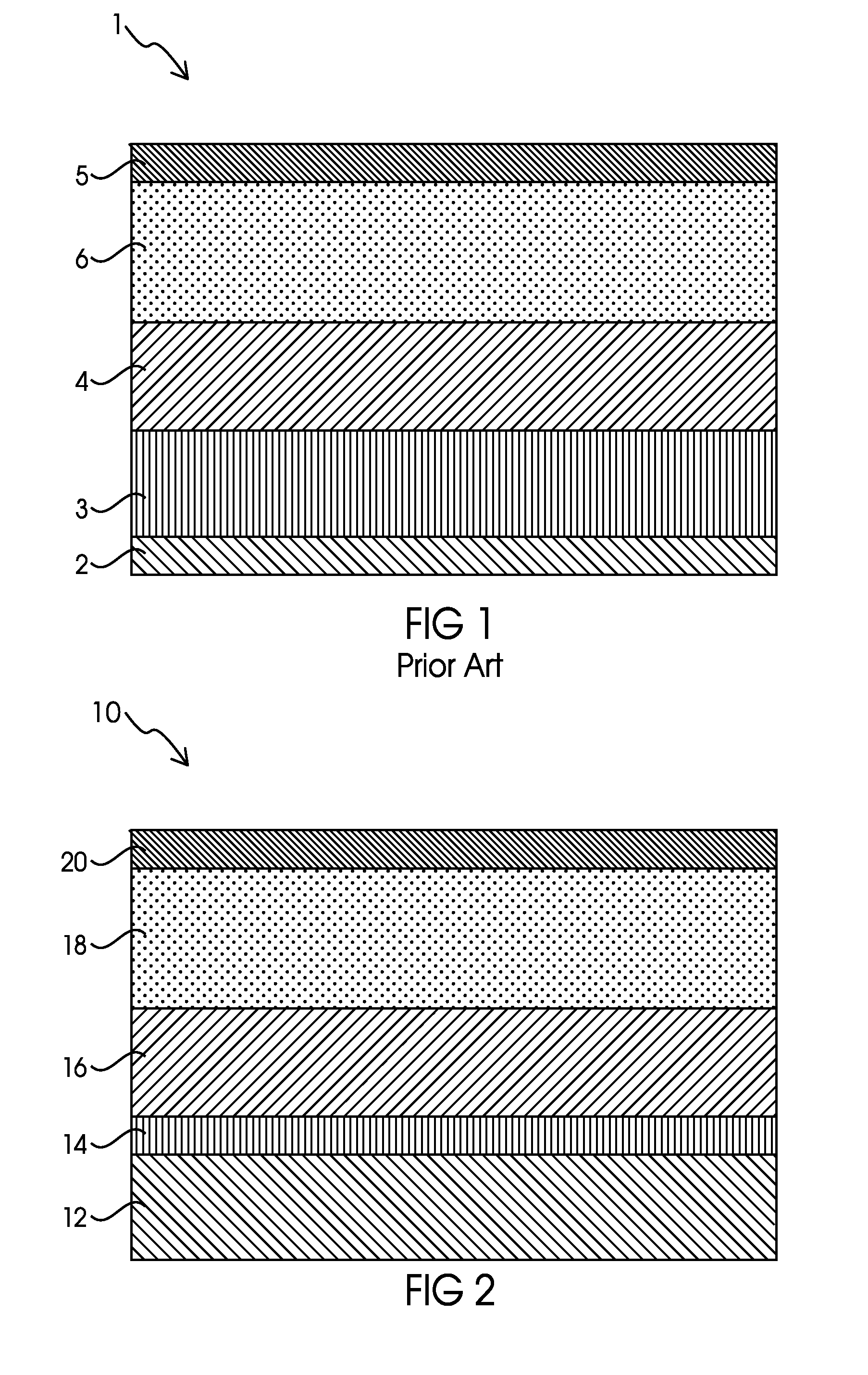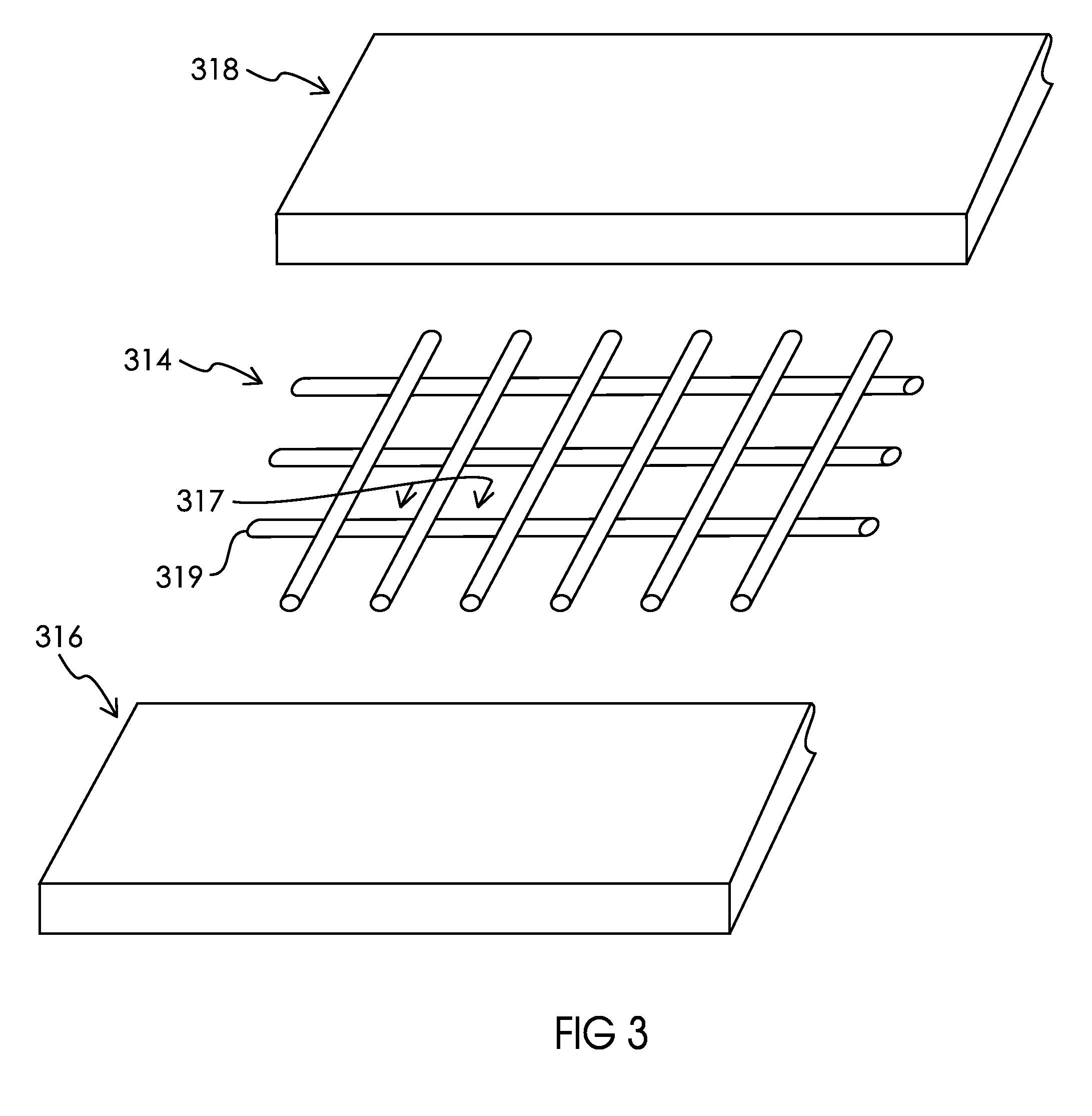Ionically permeable structures for energy storage devices
- Summary
- Abstract
- Description
- Claims
- Application Information
AI Technical Summary
Benefits of technology
Problems solved by technology
Method used
Image
Examples
example 1
Formation of an IPC Layer on a Monolithic Anode
[0072]A Silicon substrate 500 μm thick is used as the starting material. The silicon substrate is cleaned and polished in 20% KOH solution at 65 C. for 3 minutes to clean the silicon surface. This sample is immersed in 500 milliliters of solution containing 0.1 M NiSO4.6H2O and 5M NH4F. The pH of the solution was maintained at 8.5 and the operating temperature was 85 C. The deposition time of the sample was 3 minutes. The sample was subsequently rinsed in DI water for 5 minutes and dried at 80 C. in air. Subsequently, the sample was annealed to a temperature of 550° C. for 20 minutes (including heating and cooling time) to form the silicide containing IPC layer.
example 1a
Formation of an IPC Layer on a Monolithic Anode
[0073]A Silicon substrate 500 μm thick is used as the starting material. The silicon substrate is cleaned and polished in 20% KOH solution at 65 C. for 3 minutes to clean the silicon surface. This sample is immersed in 500 milliliters of solution containing 0.1 M NiSO4.6H2O and 5M NH4F. The pH of the solution was maintained at 8.5 and the operating temperature was 85° C. The deposition time of the sample was 3 minutes. The sample was subsequently rinsed in DI water for 5 minutes and dried at 80° C. in air. Subsequently, the sample was annealed to a temperature of 550° C. for 20 minutes (including heating and cooling time) to form the silicide containing IPC layer. The excess Ni that did not form the silicide was selectively etched using a solution of 10% H2O2 and 10% H2SO4 for 10 minutes at 75° C.
example 1b
Formation of an IPC Layer on a Monolithic Anode
[0074]A Silicon substrate 500 μm thick is used as the starting material. The silicon substrate is cleaned and polished in 20% KOH solution at 65° C. for 3 minutes to clean the silicon surface. This sample is immersed in 500 milliliters of solution containing 0.1 M NiSO4.6H2O and 5M NH4F. The pH of the solution was maintained at 8.5 and the operating temperature was 85° C. The deposition time of the sample was 3 minutes. The sample was subsequently rinsed in DI water for 5 minutes and dried at 80° C. in air. Subsequently, the sample was annealed to a temperature of 300° C. for 5 minutes (including heating and cooling time) to improve the adhesion of deposited Ni to silicon. Since the deposit was based on a displacement nickel deposition, the Ni layer was porous and was able to allow the Lithium transport when assembled as an anode in a lithium battery.
PUM
 Login to View More
Login to View More Abstract
Description
Claims
Application Information
 Login to View More
Login to View More - R&D
- Intellectual Property
- Life Sciences
- Materials
- Tech Scout
- Unparalleled Data Quality
- Higher Quality Content
- 60% Fewer Hallucinations
Browse by: Latest US Patents, China's latest patents, Technical Efficacy Thesaurus, Application Domain, Technology Topic, Popular Technical Reports.
© 2025 PatSnap. All rights reserved.Legal|Privacy policy|Modern Slavery Act Transparency Statement|Sitemap|About US| Contact US: help@patsnap.com



